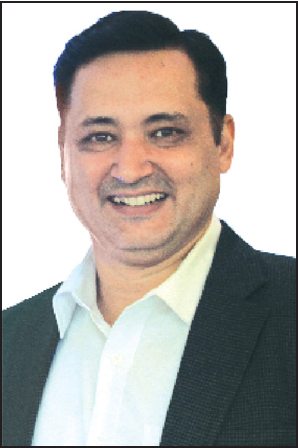Sudhir Tangri, country general manager, Keysight Technologies India Pvt Ltd, speaks with Rahul Chopra and Pankaj Vashisht of EFY on what transforms test and measurement equipment. On September 19, 2013, Agilent Technologies announced plans to separate into two publicly traded companies through a tax-free spin off of its electronic measurement business. The new company, Keysight Technologies, began operating as a wholly-owned subsidiary of Agilent on August 1, 2014 with a full separation anticipated in early November 2014

Q. What changes do you see from the measurement side in the industry?
A. An important change that we see in the industry is the transition of measurement algorithms into software. Earlier many of these measurement algorithms were in the hardware. Now we are transitioning them into software in order to make them more versatile and flexible. As more new applications emerge, algorithms in software will allow us to easily accommodate those applications and their platform measurements by simply making some changes in that algorithm.
Q. Which is preferable: traditional PC environments or FPGA-based platforms?
A. There are certain specific areas where we cannot work with FPGAs, like in cases where codes must be closed and hidden for security reasons. Another example is in industrial automation, where there is not much need for complex algorithms, but these need to be fine-tuned based on the requirements. In these cases, you can program the FPGA for the measurement algorithm and use the open FPGA.
Q. What challenges do growing technologies like Internet of Things present before the T&M industry?
A. Looking from a technology standpoint, IoT fundamentals are composed of two major concepts. One concept focuses on devices, while the other focuses on communication between them. Whether it is wire-line or wireless communication, there is a very clear phenomenon happening worldwide, that the amount of data will continue to grow. The amount of data may go up over a million times in the coming years, which will create the requirement for tools that can simulate this data and thus allow you to design your networks accordingly. Second, there are complex intelligent IoT devices coming in. These devices have a lot of material science going into them. These require a set of state-of-the-art characterisation tools and measurement instruments.
Q. Till what level do you see touch-screen integration in equipment and in industries?
A. Our S-series oscilloscope is the first instrument on the planet with a capacitive touch, just like our smartphones today. You can actually do a dual-window zoom and all other nice user interface we are accustomed to in consumer electronics. The interesting thing is that, this same instrument was being sold ten years ago with a monochrome screen and a keyboard. Today it only has a screen with few buttons here and there.
Q. What top key technology shifts today define the future of T&M equipment or products?
A. One definitely is the increase in the wireless data being generated, which will continue. In aerospace and defence industry, the wireless data is very critical. It is becoming even more prominent from a real-time scenario. From material or devices stand-point, new materials are getting invented, like curved glasses. There is a major inflection point that is happening in the industry because so much research is happening in material science at an accelerated rate. This was not the case earlier.
Then there is the trend of systems that are instrument-aware. This means that you have a built-in instrument in the system to do a health check with a satellite above. So this is one shift where you need miniaturised and very versatile instrumentation. There is also a major shift in the software controls happening in T&M. When we say software control, it is not just algorithms, because there are a few algorithms that cannot be implemented in software. They are very material specific, and you have to have that algorithm implemented in hardware, like millimeter wave algorithm, depending upon the frequency.
Q. What kind of T&M products are designed for markets like India?
A. Agilent has various products for emerging markets. For instance, in cases where you do not have the physical instrument, you can virtually connect instruments that can take measurements and then move on to solve them. We have a product called Benchview, which creates a virtual instrumentation setup on your desktop. It has special significance in emerging markets where customers are cost-sensitive.
Let us take a typical example of a college with 20 students who have to do a practical. Now, it might not be prudent for a college to invest in 20 boxes. They can probably go for one or two boxes and then use Benchview to provide access to everyone.





